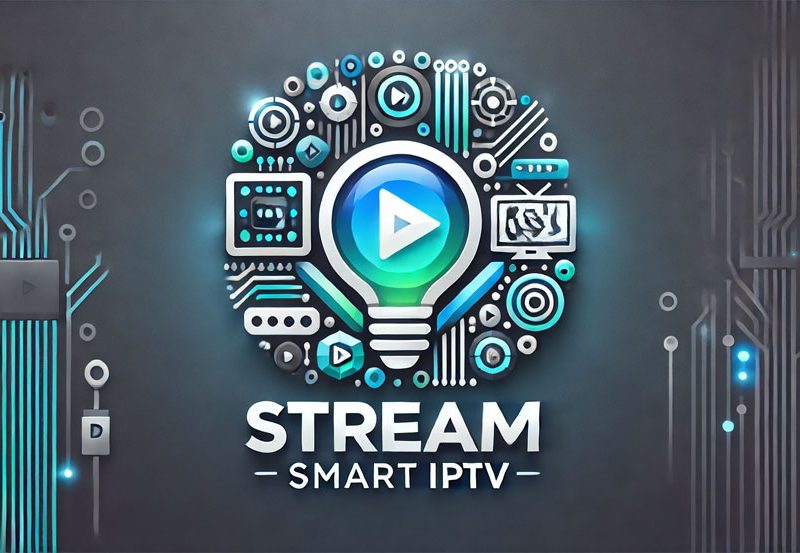In the rapidly evolving world of digital entertainment, Internet Protocol Television (IPTV) has emerged as a dominant force, transforming how we consume media. Central to the IPTV experience are set-top boxes, devices that bridge the gap between internet-based content delivery and traditional television viewing. This comprehensive exploration delves into the various types of IPTV set-top boxes, their features, benefits, and considerations to help you choose the right device for your home entertainment needs.
Buy 1 Year IPTV and Enjoy Unlimited Content
1. Understanding IPTV Set-Top Boxes
IPTV set-top boxes are specialized devices that receive and decode IPTV signals, enabling users to stream live television, on-demand content, and interactive services directly to their televisions. Unlike traditional cable boxes, IPTV set-top boxes leverage internet connectivity to deliver a more flexible and personalized viewing experience.
Key Functions:
- Content Decoding: Converts IPTV streams into viewable content on your TV.
- User Interface: Provides an intuitive interface for navigating channels, accessing on-demand content, and utilizing interactive features.
- Connectivity: Connects to the internet via Ethernet or Wi-Fi, and interfaces with your TV through HDMI or other output ports.
2. Types of IPTV Set-Top Boxes
IPTV set-top boxes come in various forms, each catering to different user preferences and technological requirements. Understanding the types available can help you make an informed decision.
a. Dedicated IPTV Boxes:
These are purpose-built devices designed exclusively for IPTV streaming. They often come with pre-installed IPTV software and are optimized for performance and reliability.
b. Smart TV Boxes:
Devices like Amazon Fire Stick, Roku, and Apple TV fall into this category. While not exclusively IPTV devices, they support IPTV applications and offer a wide range of streaming options beyond IPTV.
c. Android-Based Boxes:
These versatile boxes run on the Android operating system, allowing users to install IPTV apps from the Google Play Store. They offer high customization and compatibility with various IPTV services.
d. Gaming Consoles:
Consoles such as Xbox and PlayStation can also function as IPTV set-top boxes through dedicated apps, providing a dual-purpose device for both gaming and streaming.
e. Hybrid Boxes:
Combining traditional TV capabilities with IPTV functionality, hybrid boxes allow users to switch seamlessly between IPTV streaming and conventional broadcast channels.
3. Key Features to Consider
When selecting an IPTV set-top box, several features can significantly impact your viewing experience. Here are the key aspects to evaluate:
a. Compatibility:
Ensure the set-top box is compatible with your IPTV service provider and supports the necessary streaming protocols and formats.
b. User Interface:
A user-friendly interface enhances navigation and accessibility. Look for intuitive menus, easy channel browsing, and customizable home screens.
c. Streaming Quality:
High-definition (HD) and 4K support are essential for crystal-clear picture quality. Additionally, consider the device’s ability to handle different bitrates and resolutions smoothly.
d. Connectivity Options:
Robust connectivity options, including Ethernet, Wi-Fi, HDMI, and USB ports, are crucial for seamless integration with your home network and other devices.
e. Processing Power:
A powerful processor ensures smooth streaming, quick app launches, and efficient multitasking, reducing buffering and lag during use.
f. Storage Capacity:
Adequate internal storage allows for app installations, firmware updates, and caching of content, enhancing overall performance.
g. Remote Control and Accessories:
Advanced remote controls with voice commands, backlit buttons, and ergonomic designs can improve the user experience. Additional accessories like game controllers or keyboard attachments may also be beneficial.
A Beginner’s Guide to Setting Up IPTV
4. Popular IPTV Set-Top Box Models
The market is replete with a variety of IPTV set-top boxes, each offering unique features and capabilities. Here are some of the most popular models:
a. MAG Box:
Known for its reliability and performance, MAG boxes are widely used in the IPTV industry. They offer straightforward functionality with robust support for multiple streaming formats.
b. Amazon Fire TV Stick:
A versatile device that supports a wide range of streaming apps, including IPTV services. Its compact design and voice control capabilities make it a favorite among users.
c. Roku Ultra:
Roku’s flagship model offers extensive app support, high-quality streaming, and an easy-to-navigate interface, making it a strong contender in the IPTV space.
d. Apple TV 4K:
Offering seamless integration with Apple services and a powerful processor, Apple TV 4K is ideal for users invested in the Apple ecosystem.
e. NVIDIA Shield TV:
Renowned for its high performance and gaming capabilities, the NVIDIA Shield TV also excels in IPTV streaming with support for 4K HDR content.
5. Pros and Cons of Different Set-Top Boxes
Understanding the advantages and disadvantages of various IPTV set-top boxes can aid in making the right choice.
a. Dedicated IPTV Boxes:
- Pros: Optimized for IPTV, reliable performance, easy setup.
- Cons: Limited functionality beyond IPTV, fewer app options.
b. Smart TV Boxes:
- Pros: Multifunctional, wide range of apps, easy to use.
- Cons: May require additional configuration for IPTV, potential for slower performance with heavy usage.
c. Android-Based Boxes:
- Pros: Highly customizable, extensive app support, versatile.
- Cons: Can be complex to set up, potential security vulnerabilities with third-party apps.
d. Gaming Consoles:
- Pros: Dual-purpose functionality, powerful hardware, familiar interface for gamers.
- Cons: Higher cost, bulkier setup, may require additional apps for IPTV.
e. Hybrid Boxes:
- Pros: Combines traditional TV and IPTV, versatile usage.
- Cons: Can be more expensive, potentially complex setup.
6. How to Choose the Right Set-Top Box
Selecting the appropriate IPTV set-top box involves assessing your specific needs and preferences. Consider the following steps:
a. Define Your Requirements:
Determine the primary purpose of the device—whether it’s solely for IPTV streaming or if you require additional functionalities like gaming or smart home integration.
b. Evaluate Your Budget:
Set a budget range and explore options within that spectrum, balancing cost with desired features and performance.
c. Check Compatibility:
Ensure the set-top box is compatible with your IPTV service provider and supports the necessary streaming protocols.
d. Read Reviews and Ratings:
User reviews and expert ratings can provide insights into the device’s performance, reliability, and user experience.
e. Test the Device:
If possible, test the set-top box before purchasing to ensure it meets your expectations in terms of functionality and ease of use.
7. Installation and Setup Tips
Proper installation and setup are crucial for optimal performance of your IPTV set-top box. Here are some tips to ensure a smooth experience:
a. Optimal Placement:
Position the set-top box in a well-ventilated area to prevent overheating and ensure a stable connection to your TV and network.
b. Secure Connections:
Use high-quality HDMI cables and ensure all connections are secure to prevent signal loss and enhance streaming quality.
c. Network Configuration:
Connect the set-top box directly to your router via Ethernet for the most stable connection. If using Wi-Fi, ensure the signal strength is strong and consider using range extenders if necessary.
d. Software Updates:
Regularly update the set-top box’s firmware and applications to benefit from the latest features, security patches, and performance improvements.
e. Personalized Settings:
Customize the interface, set up parental controls, and organize your favorite channels and apps to tailor the viewing experience to your preferences.
8. Future Trends in IPTV Set-Top Box Technology
The IPTV landscape is continually evolving, with set-top box technology advancing to meet changing consumer demands. Here are some emerging trends:
a. Enhanced AI Integration:
Artificial Intelligence is being integrated into set-top boxes to provide personalized content recommendations, voice-controlled interfaces, and smart home integration.
b. 8K Streaming:
As 8K content becomes more prevalent, set-top boxes are being developed to support ultra-high-definition streaming, offering unparalleled picture quality.
c. Virtual Reality (VR) and Augmented Reality (AR):
Future set-top boxes may incorporate VR and AR capabilities, providing immersive viewing experiences and interactive content.
d. Improved Security Features:
With increasing concerns about digital privacy, set-top boxes are incorporating advanced security measures, including enhanced encryption and secure boot processes.
e. Seamless Multi-Device Integration:
Set-top boxes will continue to evolve to offer seamless integration with a wide range of devices, including smartphones, tablets, and smart home systems, ensuring a cohesive digital ecosystem.
Essential Tips for Safe and Secure IPTV
9. Conclusion
Choosing the right IPTV set-top box is pivotal in enhancing your digital entertainment experience. With a myriad of options available, understanding the different types, key features, and their respective advantages and disadvantages can guide you towards making an informed decision. Whether you prioritize high-definition streaming, extensive app support, or multifunctional capabilities, there’s an IPTV set-top box tailored to meet your specific needs. As technology advances, staying abreast of the latest trends and innovations will ensure that your IPTV setup remains cutting-edge, providing seamless and enjoyable viewing experiences for years to come.





